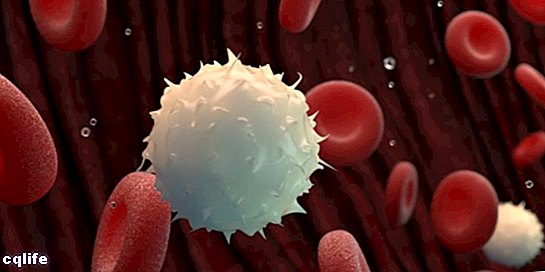We explain what anatomy is and what this science studies. Types of anatomy and examples of systems and apparatus of anatomy.
The structure of living things is called anatomy.What is Anatomy?
Anatomy is a science that studies the structure of living beings, that is, the location and arrangement of their organs (such as bones, muscles and viscera) and the relationship between them. Also called anatomy to the own structure of the living beings. This term is widely used in sciences such as medicine and biology.
The word anatomy comes from the Greek and is composed of the adverb Ana (What does it mean above) and the verb take (What does it mean cut or incision). The combination of these words formed the term anatémnein, which means "cut from top to bottom" and also "dissect". The origin of the word anatomy is not random, since the basis of this science consists in dissecting corpses for study. Those who study any branch of biology, must study the anatomy of their objects of study, either human or animal, inclusive vegetable.
Thanks to the contributions of anatomical studies, great discoveries in science could and can be made. These findings, together with the advancement of the technology, allow scientists to continue discovering more and more events, and even develop tools with different applications (such as vaccines and prosthetics among other examples).
Within the anatomy, there are many subdivisions, such as:
- Systematic or descriptive anatomy. Separate the body into systems.
- Clinical or applied anatomy. Relates diagnosis and treatment.
- Comparative anatomy. Compare human anatomy with that of other animals.
- Pathological anatomy. It is dedicated to the study of the deterioration of tissues, organs and systems.
- Functional or physiological anatomy. Study the functions of the organs.
- Plant anatomy. Branch of the botany dedicated to the study of the internal structure of plants.
- Animal or veterinary anatomy. It is dedicated to the study of and description of the bodies of animals.
- Human anatomy. It is dedicated to the study and description of the human body.
Apparatus and systems of the human anatomy

Although very frequently the terms "system" and "apparatus" are used as synonyms, in practice they are not. In the context of the human body, a system refers to a set of similar organs due to their origin and structure, the objective of which is to work together to perform a specific physiological function in the body.
The systems of the human body group organs that are made up of similar tissues. On the other hand, an apparatus is a set of systems that contribute to fulfill the same function, and its organization is usually more complex than that of a system. Furthermore, unlike systems, apparatus are made up of organs whose tissues are diverse or heterogeneous.
Different systems and devices are identified in the human body, among which are:
- Endocrine system. It is responsible for the production of hormones that regulate the metabolism, sexual function and growth of the body. It is made up of the endocrine (hormone-producing) glands, located in different parts of the body.
- Nervous system. It is responsible for the processing of stimuli and the generation of adequate responses (synaptic processes and communication of the brain). It is formed by the Central Nervous System (brain and spinal cord) and the peripheral nervous system (nerves that run throughout the body).
- Skeletal or bone system. It is in charge of giving structure, support and mobility to the body. It is made up of 206 bones.
- Immune system. It is in charge of defending the body from any infectious agent (such as virus or bacteria) that threatens its normal operation. It is made up of a set of specialized cells (different types of white blood cells or leukocytes) and lymph nodes.
- Muscular system. It is in charge of allowing the different movements of the body. It is made up of 650 muscles of different types.
- Cardiovascular system. It is in charge of the distribution of blood throughout the body. This device allows cells to receive nutrients and other substances that travel through the blood, and also collects waste and transports it to organs that eliminate or metabolize them for elimination. It is made up of the heart, the different types of blood vessels (veins, arteries, and capillaries), and blood.
- Digestive system. It is in charge of the processing and transformation of the food in usable nutrients, and their subsequent assimilation. It is made up of the digestive tract (made up of the mouth, esophagus, stomach, intestine, and anus) and associated glands (such as the liver, pancreas, and salivary glands).
- Respiratory apparatus. It is in charge of allowing the exchange of gases (entry and use of oxygen and elimination of carbon dioxide) essential for the functioning of the body. It is made up of the nasal passages, pharynx, larynx, trachea, lungs, and the diaphragm.
- Reproductive system. It is in charge of carrying out the production of gametes and other functions related to the sexual reproduction. It is different in the different sexes: in men it is formed by the sexual organs masculine (such as the testicles and penis) and in women by the sexual organs female (such as the uterus and ovaries).
- Locomotor apparatus. It is in charge of allowing locomotion, that is, the movement of the body. It is made up of the systems articular, muscular and skeletal, coordinated by the nervous system.
- Excretory system. It is in charge of eliminating the waste produced and toxic substances from the body. It is made up of the kidneys (in which urine is produced) and other excretory routes.
